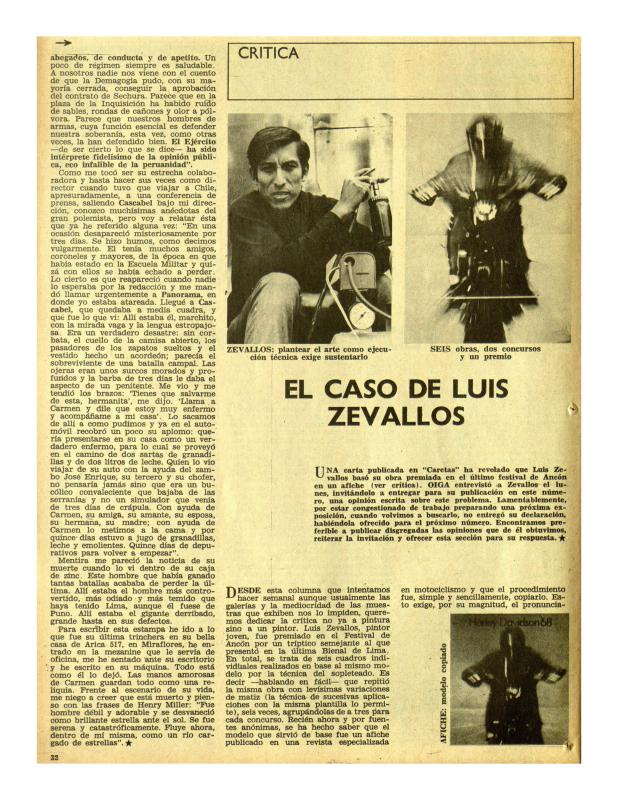Despite its brevity, this collection of comments conveys the range of opinions expressed in the debate about the first prize for painting at the Festivales de Ancón (1969). Participants in the round-table discussion that yielded the various points of view included the critic Juan Acha (1916–95), the painter Carlos Aitor Castillo (1913–2000), and the theater critic and art collector Jean Rottman (recorded here as Rothman). The critic Percy Murillo Garaycochea (b. 1929) moderated the discussion.
The jury’s decision concerning the first prize (for painting) at the Festivales de Ancón in 1969 was extremely controversial, and marked both the peak and the turning point for the Peruvian cosmopolitan avant-garde in the local art scene in the 1960s. At that time Ancón was the most fashionable resort on the outskirts of Lima. During the summer it hosted musical and theatrical events, as well as lectures and a painting competition which (on that occasion) attracted a great deal of attention. When the results were announced, Caretas magazine published a letter accusing the winning painting—Motociclista No. 3, by Luis Zevallos Hetzel—of plagiarism because it was a “faithful copy” of an advertisement published in the United States for a brand of motorcycles. An honorable mention at the contest went to a (playfully erotic Pop) painting by Ugo Camandona, an Italian painter and ceramicist who lived in Peru, who was also accused of supposed plagiarism. Both accusations sparked a heated debate about the value of “originality” in modern art, and about Pop Art’s role and function in consumer society. The apparent anachronism underlying the controversy clearly revealed the very limited penetration of avant-garde ideologies that had been achieved in a cultural milieu that was still reluctant to embrace the radical transformations that art was already experiencing in the rest of the world. All this was taking place in an environment that was increasingly having to adjust to the socialist and nationalist policies of the Gobierno Revolucionario de las Fuerzas Armadas (1968–75), the military regime led by General Juan Velasco Alvarado.
Luis Zevallos Hetzel, who was awarded the prize, was one of the pioneers of Pop Art in Peru, and was a member of Arte Nuevo, one of the avant-garde groups at that time. But controversial reactions and other factors subsequently led him to stop experimenting with innovative styles.
[For additional information, see the following articles in the ICAA digital archive: by Alberto Valdivia Portugal “¡Pop!” (doc. no. 1142123); by Augusto Ortiz de Zevallos “El caso de Luis Zevallos” (doc. no. 1142139), “Arte Actual: El pop y un artículo” (doc. no. 1142347), and “En Ancón: significativa muestra insignificante” (doc. no. 1142364); by Emilio Hernández Saavedra “A propósito del ‘plagio’” (doc. no. 1142331); and by Luis Rey de Castro “Pintor Pop Plagia por Premio” (doc. no. 1142397)].






